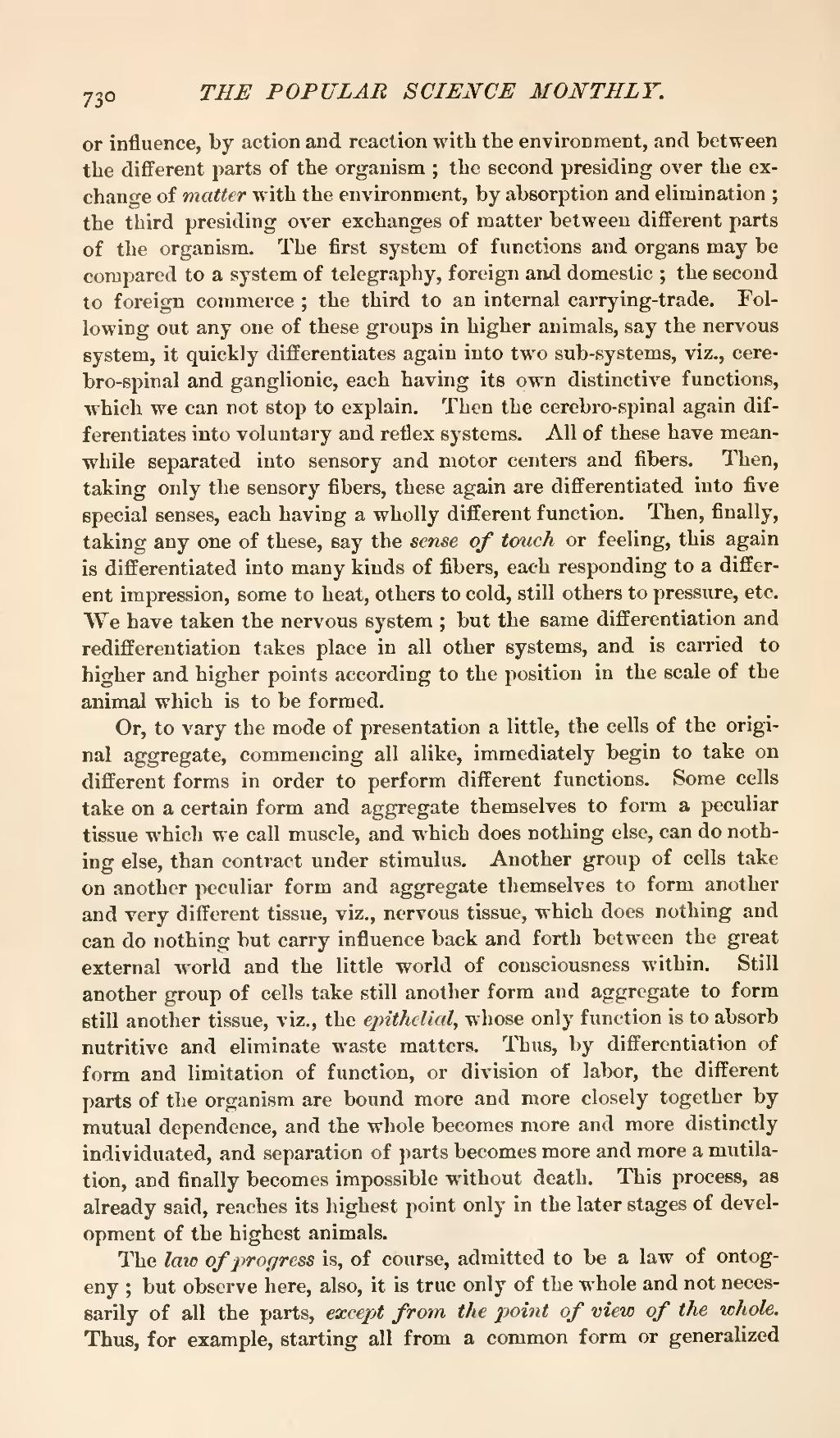or influence, by action and reaction with the environment, and between the different parts of the organism; the second presiding over the exchange of matter with the environment, by absorption and elimination; the third presiding over exchanges of matter between different parts of the organism. The first system of functions and organs may be compared to a system of telegraphy, foreign and domestic; the second to foreign commerce; the third to an internal carrying-trade. Following out any one of these groups in higher animals, say the nervous system, it quickly differentiates again into two sub-systems, viz., cerebro-spinal and ganglionic, each having its own distinctive functions, which we can not stop to explain. Then the cerebro-spinal again differentiates into voluntary and reflex systems. All of these have meanwhile separated into sensory and motor centers and fibers. Then, taking only the sensory fibers, these again are differentiated into five special senses, each having a wholly different function. Then, finally, taking any one of these, say the sense of touch or feeling, this again is differentiated into many kinds of fibers, each responding to a different impression, some to heat, others to cold, still others to pressure, etc. We have taken the nervous system; but the same differentiation and redifferentiation takes place in all other systems, and is carried to higher and higher points according to the position in the scale of the animal which is to be formed.
Or, to vary the mode of presentation a little, the cells of the original aggregate, commencing all alike, immediately begin to take on different forms in order to perform different functions. Some cells take on a certain form and aggregate themselves to form a peculiar tissue which we call muscle, and which does nothing else, can do nothing else, than contract under stimulus. Another group of cells take on another peculiar form and aggregate themselves to form another and very different tissue, viz., nervous tissue, which does nothing and can do nothing but carry influence back and forth between the great external world and the little world of consciousness within. Still another group of cells take still another form and aggregate to form still another tissue, viz., the epithelial, whose only function is to absorb nutritive and eliminate waste matters. Thus, by differentiation of form and limitation of function, or division of labor, the different parts of the organism are bound more and more closely together by mutual dependence, and the whole becomes more and more distinctly individuated, and separation of parts becomes more and more a mutilation, and finally becomes impossible without death. This process, as already said, reaches its highest point only in the later stages of development of the highest animals.
The law of progress is, of course, admitted to be a law of ontogeny; but observe here, also, it is true only of the whole and not necessarily of all the parts, except from the point of view of the whole. Thus, for example, starting all from a common form or generalized

